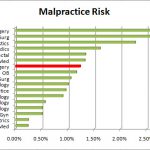Torso CT scanning has become a mainstay in the evaluation of major blunt trauma. The question of using GI contrast in these CTs arises from time to time. There is an ongoing battle between the ED physician/trauma surgeon, who want quick clinical and relevant results, and the radiologist, who wants nice pictures and a comprehensive list of diagnoses.
IV contrast is so helpful and immediately available that it is virtually a no-brainer to use. The only exception is in patients who have a known allergy to it. GI contrast is more complicated. Ideally, it should be given in divided doses over about an hour, and there just isn’t time for it in trauma patients.
We designed a prospective, randomized study more than 10 years ago that looked at groups of patients who either did or did not receive oral contrast. We studied 394 patients and looked a the need for laparotomy based on study results, delayed diagnoses, and nausea/vomiting.
Thirteen percent of the patients in each group vomited. There were two aspirations, both in the non-contrast group. There were 50 abnormal scans in the contrast group and 55 in the no-contrast group. Nineteen contrast and 14 no-contrast patients were taken to OR.
Most interesting, there were 6 bowel injuries in the contrast group and one was not seen by CT. There were 3 bowel injuries in the no-contrast group and all were seen on CT. We found that there were always other signs of injury, such as mesenteric stranding or bubbles.
Bottom line: Oral contrast is not necessary in acute blunt trauma patients undergoing CT of the abdomen.


